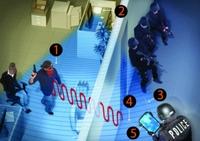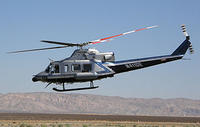-
Drones used by police, firefighters raise privacy concerns
DHS is accelerating the use of unmanned drones by police and firefighters around the country with the intent of detecting fires, radiation leaks, and other potential threats, but Congress and privacy advocacy organizations think the se of drones raises several privacy issues
-
-
Wynyard Group takes New Zealand Police forensics solution global
Developed in 2007, New Zealand Police technology called EVE (Environment for Virtualized Evidence) allows enforcement officers rapidly to analyze seized electronic goods such as mobile phones, PCs, and other storage devices for evidence and intelligence
-
-
Seeing through walls with the help of laser systems
Inspired by the erratic behavior of photons zooming around and bouncing off objects and walls inside a room, researchers combined these bouncing photons with advanced optics to enable them to “see” what is hidden around the corner
-
-
Seeing through walls, clearly

Research and tests show, for the first time, the ability to use t passive WiFi radar for through-the-wall (TTW) detection of moving personnel – and do so covertly
-
-
New forensic tool automates RAM forensic investigations
New tool enables computer forensic investigators to analyze and make use of information contained in volatile memory; memory analysis produces important, case-relevant data for investigators that cannot be obtained from disk analysis, such as running applications, open files, and active network connections
-
-
Researchers say spoofed GPS signals can be countered
From cars to commercial airplanes to military drones, global positioning system (GPS) technology is everywhere — and researchers have known for years that it can be hacked, or as they call it, “spoofed”; the best defense, they say, is to create countermeasures that unscrupulous GPS spoofers can not deceive
-
-
Northrop Grumman delivers Nationwide AIS to Coast Guard
Northrop Grumman has delivered its Nationwide Automatic Identification System (AIS) to the Coast Guard; the system provides a more comprehensive view of vessels bound for and navigating within U.S. ports and waterways
-
-
New biometrics discipline -- foot biometrics – for security, disease detection
Identity science takes a giant, well, step forward with a new discipline in biometrics: foot biometrics; researchers at the new $1.5 million per year Pedo-Biometrics Research and Identity Automation Lab will test insole sensory system prototypes for a variety of identification uses, from security to detecting the onset of such diseases as diabetes and Parkinson’s
-
-
New contracting model would allow the Pentagon to do more with less
Old-school, transactional product support paid defense contractors to ship spare parts and do repairs; it paid contractors to “fix-on-failure”; management experts say that DoD should adopt a different contracting model: Performance-Based Life Cycle Product Support Management, or PBL; under PBL, the military buys system performance, or outcomes, rather than products or services, and a contractor is responsible for providing a defined level of equipment readiness or availability, whatever the cost
-
-
New research raises questions about iris recognition systems
Since the early days of iris recognition technologies, it has been assumed that the iris was a “stable” biometric over a person’s lifetime — “one enrollment for life”; researchers find, however, that iris biometric enrollment is susceptible to an aging process that causes recognition performance to degrade slowly over time
-
-
Voice recognition capabilities at the FBI -- from the 1960s to the present
Chris Archer, the online content editor at IDGA (the Institute for Defense & Government Advancement), talked with Hirotaka Nakasone, a senior scientist in the FBI’s Voice Recognition Program; Nakasone examines the use and effectiveness of current speaker authentication technologies at the FBI; highlights the various challenges which are unique to voice recognition, and discusses what plans are in place for capturing voice recordings in line with the FBI’s Next Generation Identification (NGI project)
-
-
New Facebook app detects pedophiles, criminals
Researchers have developed a new privacy solution for Facebook; the Social Privacy Protector (SPP), developed by Ben-Gurion University of the Negev (BGU) undergraduate students, can help parents adjust their children’s profiles in one click, prevent criminals from gathering valuable personal information, and keep teens safe from pedophiles
-
-
UAV Code of Conduct for unmanned aircraft systems operations released
The Association for Unmanned Vehicle Systems International (AUVSI) has published the Unmanned Aircraft System Operations Industry Code of Conduct, a set of guidelines to provide AUVSI members — and those who design, test, and operate unmanned aerial systems (UAS) for public and civil use — with recommendations for their safe, non-intrusive operation
-
-
A third Bell 412 helicopter delivered to NYPD for counterterrorism missions

The NYPD dedicated many hours to designing the specifications of the department’s third Bell 412 to meet the diverse needs of the police department; one of the counterterrorism additions to the Bell 412 is a radiation detection system that can identify radiation signatures from an altitude of 200 feet in an effort to protect the city from nuclear bomb threats
-
-
UAV Code of Conduct for unmanned aircraft systems operations released
The Association for Unmanned Vehicle Systems International (AUVSI) has published the Unmanned Aircraft System Operations Industry Code of Conduct, a set of guidelines to provide AUVSI members — and those who design, test, and operate unmanned aerial systems (UAS) for public and civil use — with recommendations for their safe, non-intrusive operation
-
- All
- Regional
- Water
- Biometrics
- Borders/Immig
- Business
- Cybersecurity
- Detection
- Disasters
- Government
- Infrastructure
- International
- Public health
- Public Safety
- Communication interoperabillity
- Emergency services
- Emergency medical services
- Fire
- First response
- IEDs
- Law Enforcement
- Law Enforcement Technology
- Military technology
- Nonlethal weapons
- Nuclear weapons
- Personal protection equipment
- Police
- Notification /alert systems
- Situational awareness
- Weapons systems
- Sci-Tech
- Sector Reports
- Surveillance
- Transportation
Advertising & Marketing: advertise@newswirepubs.com
Editorial: editor@newswirepubs.com
General: info@newswirepubs.com
2010-2011 © News Wire Publications, LLC News Wire Publications, LLC
220 Old Country Road | Suite 200 | Mineola | New York | 11501
Permissions and Policies
Editorial: editor@newswirepubs.com
General: info@newswirepubs.com
2010-2011 © News Wire Publications, LLC News Wire Publications, LLC
220 Old Country Road | Suite 200 | Mineola | New York | 11501
Permissions and Policies
